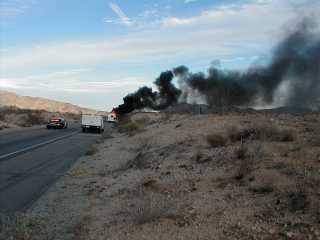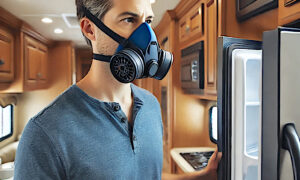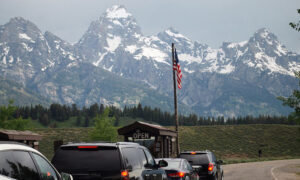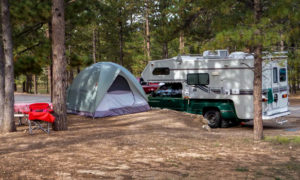
 All recreational vehicles must carry at least one dry chemical or carbon dioxide (CO2) type extinguisher in working condition with a rating of at least 4-B. The most effective fire extinguishers use halon gas and are good investments for RV safety. It can keep a small, manageable fire from becoming a major, uncontrollable fire.
All recreational vehicles must carry at least one dry chemical or carbon dioxide (CO2) type extinguisher in working condition with a rating of at least 4-B. The most effective fire extinguishers use halon gas and are good investments for RV safety. It can keep a small, manageable fire from becoming a major, uncontrollable fire.
The best fire protection includes:
- Proper maintenance and inspection of fuel systems and electrical equipment
- A properly installed and working smoke detector
- A properly installed and working LP gas detector.
Make sure the fire extinguisher is suitable for the type of fire and it is large enough to put out the fire. If you have a fuel or electrical fire, first try to shut off the source of the fuel. Turn off the fuel valves and unplug the electrical circuits. If you aren’t sure, shut off everything.
All family members should be able to put out a small gas or oil fire with the extinguisher.
The most common extinguisher is a 2 1/2 lb. ABC which is suitable for all types of fires, including fuel fires and electrical fires. There is no substitute for the correct type of fire extinguisher. The letter designates the type of fire suitability:
- A—ordinary materials like wood and paper
- B—petroleum products such as gasoline, propane kerosene
- C—electrical
Be sure to recharge the extinguisher after it is used, even if it is not totally empty. Conventional CO2 extinguishers should be recharged periodically even if they are not used. The dry powder used in CO2 extinguishers tends to compact with road vibration. Before using it, rap the CO2 extinguisher sharply on its side and bottom to shake the powder loose.
Put the extinguishers where fires are more likely to occur and where they can be easily reached. For example, with a tow vehicle and travel trailer, you should have one in the tow vehicle and another near the kitchen in the trailer.
You may also want to read: RV Fire! Be Aware of the Possibility – How to Reduce the Risk of an RV Fire
& RV Propane Safety Tips







Hi Steven
Always read your tips. They are always informative. However I understand that Halon extinguishers were banned in many parts of the world. a. its a cfc and that depletes the ozone layer and b. the product of the halon and the fire produces phosgene gas which in a confined place is deadly.
Regards
Peter J